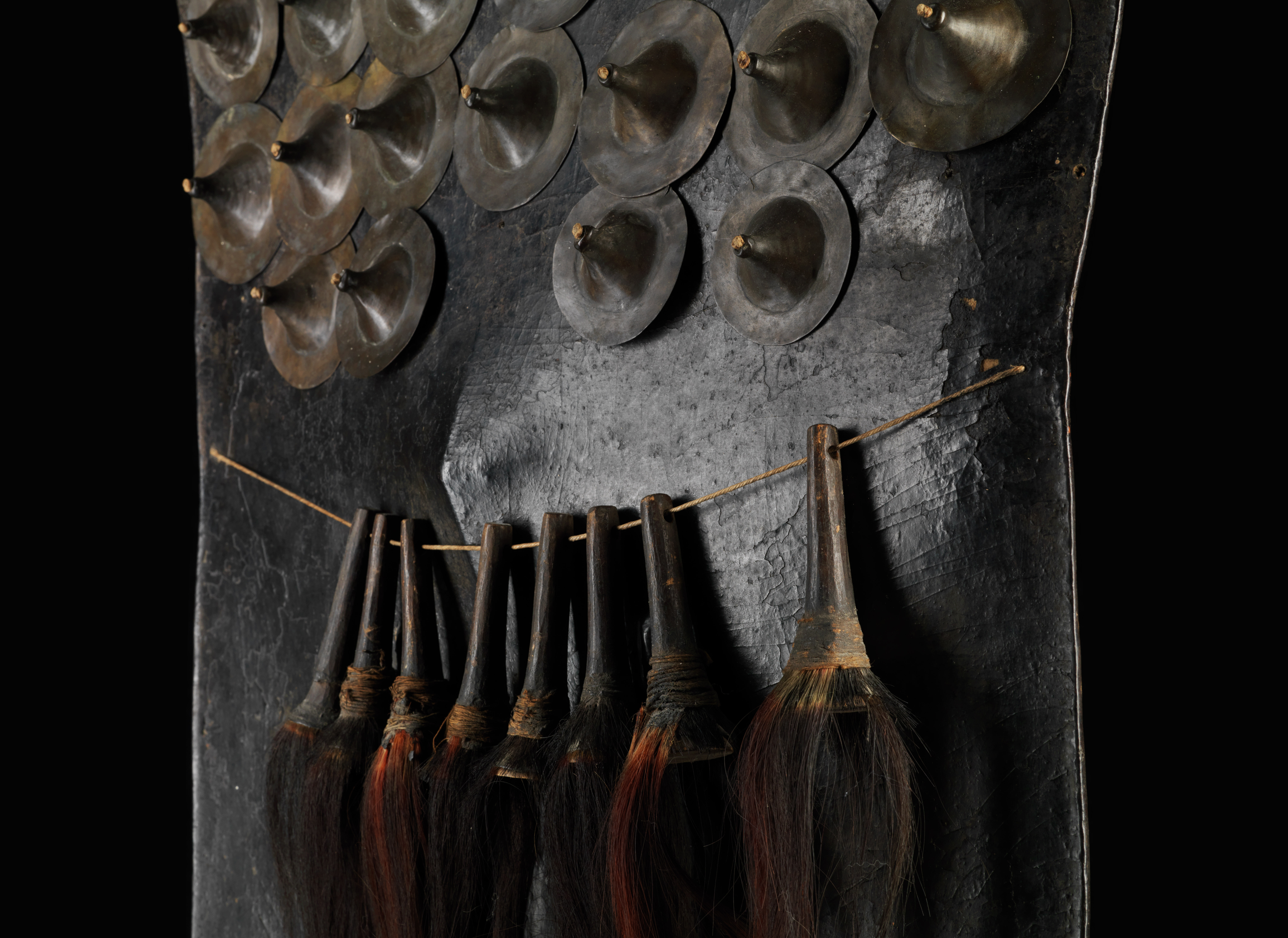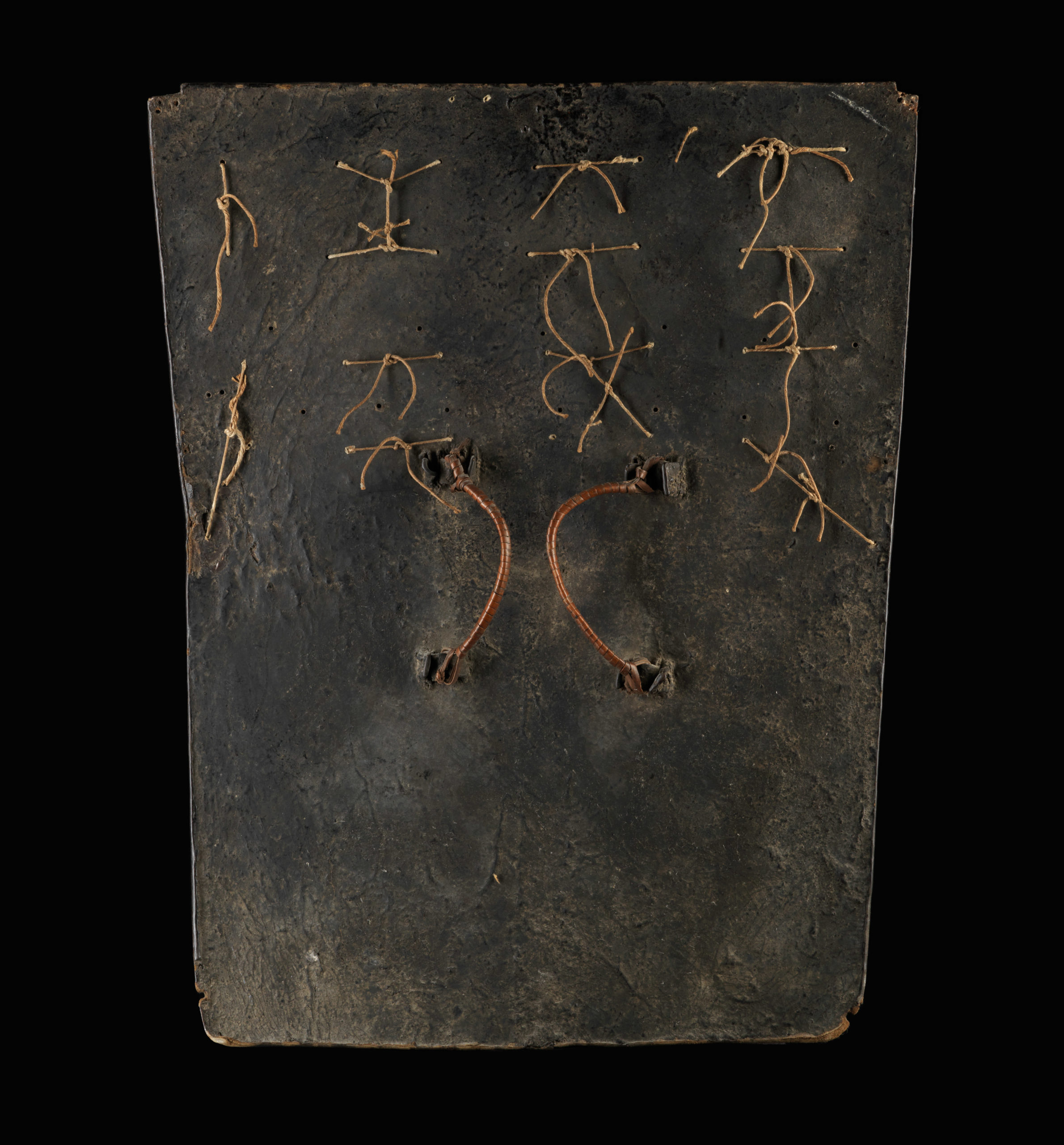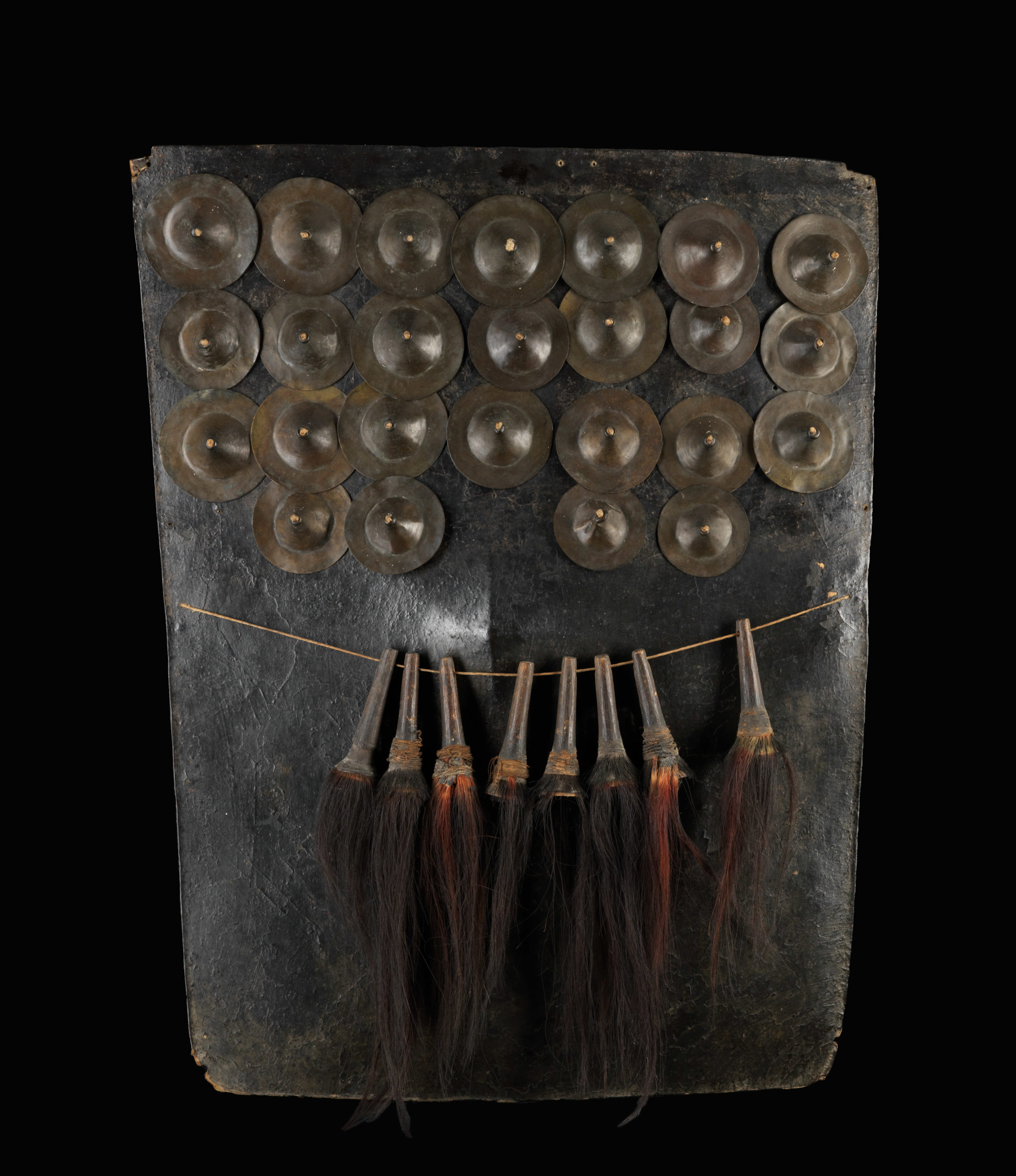Shield (Lushai Naga)
This rectangular shaped shield consists of a robust, black painted fabric plate. A rattan handle is attached to the back. In the upper part of the shield there are 25 round, cast brass hats in a row (three are missing). Today they are dark oxidised, but at the time the shield was used they were probably shiny and bright. In the middle of the shield a horizontal cord is stretched out, from which 8 red coloured tufts of goat hair, attached to pieces of wood, are suspended in a movable way. This is reminiscent of human hair from head trophies or “scalps”, the removal of which is historically guaranteed in neighbouring Tibet and Myanmar. The shields were worn by high-ranking clan leaders and successful warriors at ceremonial dances during the Ngada festival. They were not used in battle. Similar ceremonial shields are also found in the Kuki Naga.
There are several interpretations of the “hats” which apparently originate as merchandise from the Thai or Cambodian area. Probably they are stylized female breasts, which play an important role as amulet and ominous symbol in the – partly matriarchal – Naga. They can also be found on house walls, which makes the house “female” and symbolises family cohesion. Another interpretation is the derivation of the design of votive stupas (miniature burial mounds for shrines) from India. Similar metal ornamental elements can be found on many objects in South East Asia.
Culturally, the Rengma Naga are closely related to the neighbouring Angami Naga. The Rengma languages belong to the Angami-Pochuri languages. The word rengma literally means “ring people”, in reference to the striking neck rings of the Rengma and Angami.
| Object | Shield (Lushai Naga) |
| Culture | Rengma or Lushai Naga, Lushai or Mizuram region, Southern Naga Highlands, North East India (Assam State) |
| Time | 18th or 19th century |
| Dimensions | Length 59,50 cm, width 45,00 cm |
| Material | Fabric, black lacquer, brass, goat hair, wood, string, rattan |








